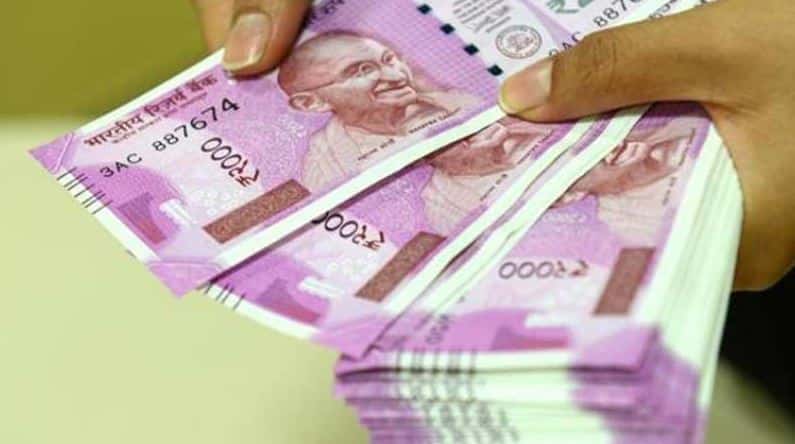Table of Contents
On August 3, India imposed import restrictions on a host of IT hardware products such as laptops, personal computers (including tablet computers), microcomputers, large or mainframe computers, and certain data processing machines with a view to boost domestic manufacturing and cut imports from countries like China. | Photo Credit: Elise Amendola
Significance
India’s decision to impose import restrictions on IT hardware products has raised concerns among major economies, including the United States, China, Korea, and Chinese Taipei. The implications of these restrictions were discussed in a meeting of the World Trade Organization (WTO), highlighting the potential impact on global trade.
Features
The import restrictions apply to a wide range of IT hardware products, including laptops, personal computers, microcomputers, large or mainframe computers, and certain data processing machines. The measures aim to promote domestic manufacturing and reduce reliance on imports, particularly from countries like China.
Objectives
The primary objective of India’s import restrictions on IT hardware is to boost domestic manufacturing in the sector. By reducing imports, India aims to create a conducive environment for the growth of Indian IT hardware manufacturers and promote self-reliance in the industry.
Effects
The implementation of these import restrictions could have significant effects on global trade dynamics. The United States expressed concerns about the impact on its exports to India, while other nations raised questions about the consistency of the measures with WTO rules. The restrictions also create uncertainty for exporters and downstream users, potentially disrupting established supply chains.
Pros and Cons
Proponents argue that import restrictions on IT hardware can stimulate domestic production, create job opportunities, and enhance national security by reducing reliance on foreign technology. However, critics raise concerns about potential trade barriers, increased costs for consumers, and the need for detailed clarifications to ensure compliance with WTO rules.
Fun Fact
Did you know that India imported personal computers, including laptops, worth $5.33 billion in 2022-23, compared to $7.37 billion in 2021-22? The import restrictions aim to narrow this import gap and promote indigenous production in the IT hardware sector.
Note: The HTML heading tags (h1, h2) have been added based on the provided instructions to structure the article.
Mutiple Choice Questions
1. What is the purpose of India imposing import restrictions on IT hardware products?
A) To increase exports to countries like China.
B) To boost domestic manufacturing and reduce imports from countries like China.
C) To decrease the availability of laptops and computers in the Indian market.
D) To impose licensing requirements on imports.
Explanation: According to the information provided, India imposed import restrictions on IT hardware products to boost domestic manufacturing and cut imports from countries like China. This means option B is correct.
2. Who raised concerns about India’s decision to impose import restrictions on laptops and computers?
A) India’s Commerce Secretary, Sunil Barthwal.
B) The U.S., China, Korea, and Chinese Taipei.
C) The World Trade Organization (WTO).
D) Paraguay’s Committee on Market Access.
Explanation: According to the information provided, the U.S., China, Korea, and Chinese Taipei raised concerns about India’s decision to impose import restrictions on laptops and computers. This means option B is correct.
3. What impact did the U.S. claim India’s decision would have on trade?
A) It would increase U.S. exports to India.
B) It would create uncertainty for exporters and downstream users.
C) It would improve bilateral trade between the U.S. and India.
D) It would create unnecessary trade barriers.
Explanation: According to the information provided, the U.S. stated that India’s decision would create uncertainty for exporters and downstream users. This means option B is correct.
4. When will the import restrictions imposed by India take effect?
A) August 3rd.
B) November 1st.
C) December 25th.
D) There is no specific date mentioned.
Explanation: According to the information provided, the import restrictions imposed by India will take effect on November 1st. This means option B is correct.
5. What was Korea’s concern regarding India’s proposed measures?
A) They were inconsistent with WTO rules and could create unnecessary trade barriers.
B) They would decrease imports from India.
C) They would only benefit countries like China.
D) They would impose licensing requirements on imports.
Explanation: According to the information provided, Korea expressed concern that India’s proposed measures seemed inconsistent with WTO rules and could create unnecessary trade barriers. This means option A is correct.
Brief Summary | UPSC – IAS
India’s decision to impose import restrictions on IT hardware products such as laptops and computers has raised concerns among the US, China, Korea, and Chinese Taipei, according to a meeting of the World Trade Organization (WTO). The US believes that the decision will impact trade, including US exports to India, and create uncertainty for exporters and downstream users. Korea stated that the measures are inconsistent with WTO rules and could create unnecessary trade barriers. India’s import restrictions, aimed at boosting domestic manufacturing and reducing reliance on countries like China, will come into effect on November 1.











